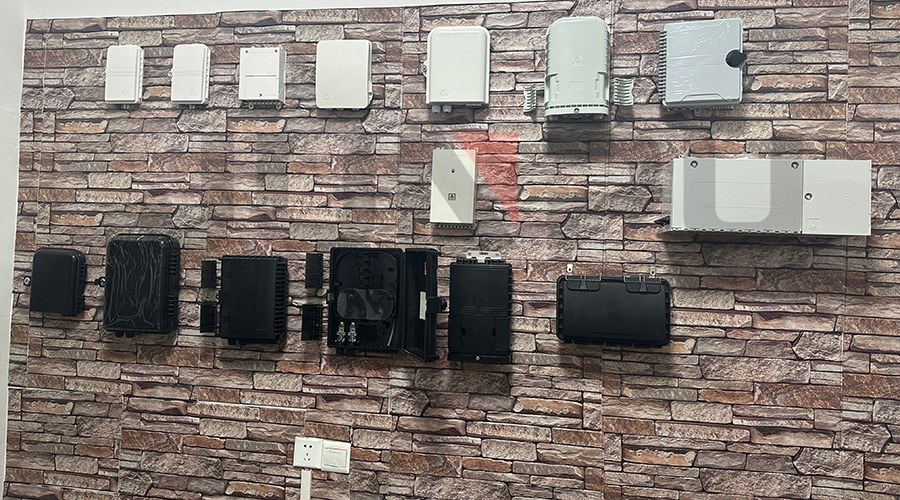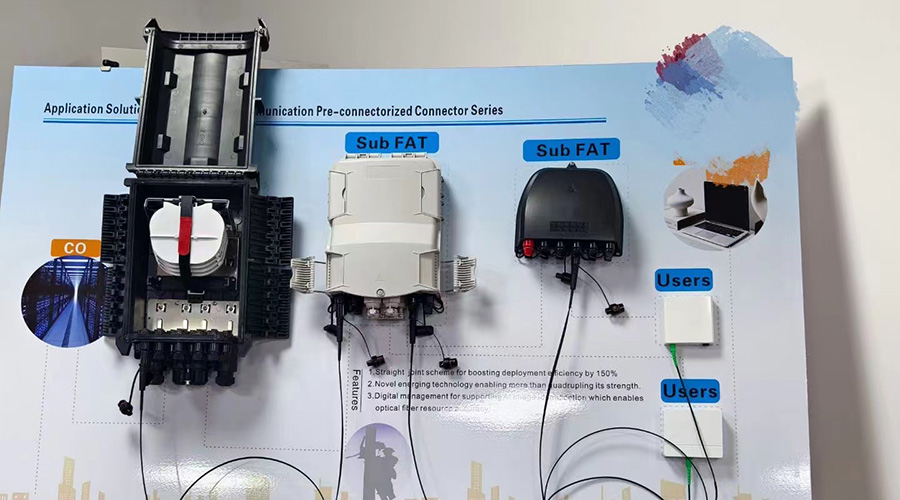
-
Home
-
Products
- Solution
- WHY JUNPU
- Services
- Resources
- News
- Contact Us

In the communications industry, fiber optic terminal boxes are indispensable equipment. The following is an introduction to this product in three parts.
Choose the right termination box: There are different types of termination boxes available in the market, so make sure to choose the one that is suitable for your specific fiber optic cable installation needs.
Prepare the cables: Before starting the termination process, make sure to properly prepare the fiber optic cables by stripping off the outer jacket and removing any excess fiber coating.
Clean the fibers: It is crucial to clean the fiber optic cables and connectors thoroughly before termination to ensure optimal performance. Use a lint-free cloth and isopropyl alcohol to clean the fibers.
Splice or terminate the fibers: Depending on the type of termination box you are using, you will either splice or terminate the fibers. Follow the manufacturer's instructions carefully to ensure a proper connection.
Secure the fibers: Once the fibers are spliced or terminated, make sure to secure them properly inside the termination box to prevent any damage or disconnection.
Test the connection: After completing the termination process, it is important to test the connection to ensure that it is working properly. Use a fiber optic tester to check for any signal loss or other issues.
Label the termination box: To make future maintenance and troubleshooting easier, label the termination box with relevant information such as the cable type, termination date, and any other relevant details.
Properly seal the termination box: Finally, make sure to properly seal the termination box to protect the fibers from dust, moisture, and other environmental factors that could affect their performance.
By following these guidelines, you can ensure a successful fiber optic cable termination process and maintain optimal performance of your fiber optic network.

Wall-mounted fiber terminal box: These are typically installed on walls or other flat surfaces and are used to terminate and manage fiber optic cables in indoor environments.
Rack-mounted fiber terminal box: These are designed to be mounted on standard 19-inch equipment racks and are used to terminate and manage fiber optic cables in data centers and telecommunications rooms.
Outdoor fiber optic terminal box: These are designed to withstand harsh weather conditions and are used to terminate and manage fiber optic cables in outdoor environments, such as on poles or in underground vaults.
Desktop fiber terminal box: These are small, compact boxes that can be placed on a desk or other flat surface and are used to terminate and manage fiber optic cables in small office or home network installations.
Fiber distribution hub: These are larger, multi-port terminal boxes that are used to distribute fiber optic cables to multiple locations within a building or campus network. They typically have multiple input and output ports for connecting to various fiber optic cables.

A fiber termination box is used in telecommunications and networking to terminate and manage the connections of fiber optic cables. It provides a secure and organized location for splicing, connecting, and protecting the fibers, as well as protecting them from environmental factors such as dust, moisture, and physical damage. Termination boxes help ensure reliable and efficient communication by providing a central point for managing fiber optic connections in a network.
 Call us on:
Call us on:  Email Us:
Email Us:  Wanhua Science and Technology Park, No. 528, Shunfeng Road, Donghu Street, Linping District, Hangzhou City, Zhejiang Province
Wanhua Science and Technology Park, No. 528, Shunfeng Road, Donghu Street, Linping District, Hangzhou City, Zhejiang Province